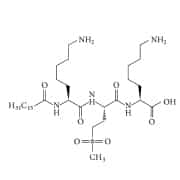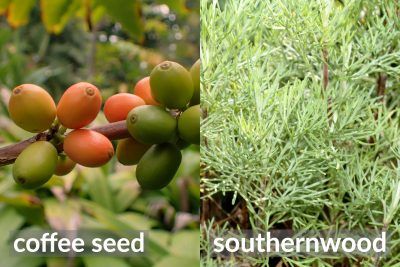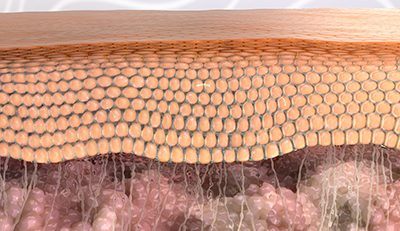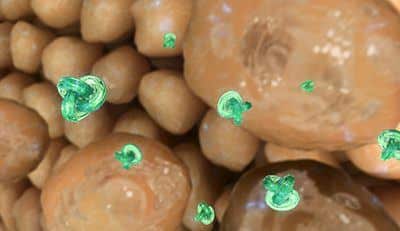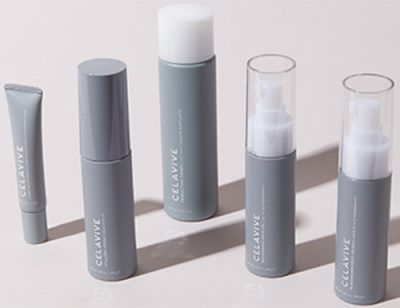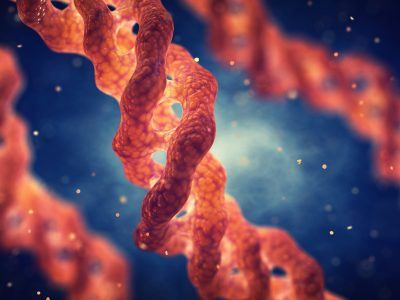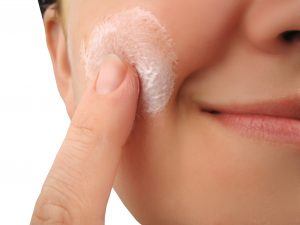Celavive Cell Signaling Complex
Signal Healthy Skin-Cell Activity for a Youthful Appearance with the Celavive® Cell Signaling Complex
Celavive® Cell Signaling Complex
USANA InCelligence Technology® signals healthy skin-cell activity for a youthful appearance with botanicals and bioactive peptides.
The look of healthy, glowing skin begins with your cells. Your skin cells keep your complexion looking healthy and vibrant by communicating with each other to activate natural responses through a process known as cell signaling.
These responses can include maintaining the appearance of youthful firmness by making collagen, elastin, or hyaluronic acid in the skin matrix. Another response might be keeping skin hydrated by producing lipids to support the skin barrier.
With age, however, the cell signaling network can weaken, and skin can start to look less vibrant. Lifestyle stresses can also add to the decline. As a result, your skin can appear prematurely older as the processes that help your skin protect and renew itself become weaker.
As part of your natural aging process, your body’s production of the elements essential for youthful-looking skin slows down. Over time, your skin structure changes and begins to show visible signs of photo-aging, fines lines and wrinkles, sagging, discoloration, and uneven texture.
Nourish Cellular Processes That Fight Visible Aging with the Celavive® Cell Signaling Complex
Restore hydration to skin cells and support cellular conversations that promote a vibrant complexion with USANA InCelligence Technology® in the Celavive Cell Signaling Complex. This blend is a unique mix of two bioactive peptides and two botanical extracts. These potent ingredients were chosen for their ability to work in highly targeted ways to rejuvenate a youthful appearance.
When used together in the complex, Palmitoyl Tripeptide-38, Hexapeptide-48 HCI, southernwood extract, and coffee-seed extract bind to key cell receptors to support and send signals that can help counteract visible signs of chronological aging and lifestyle stress.
Peptides are short sequences of two to 50 amino acids linked by peptide bonds that perform different functions for beautiful skin. The peptides in the Cell Signaling Complex are designed to act like natural peptides to support signals for a vibrant complexion. Palmitoyl Tripeptide-38 was derived from a natural peptide. Hexapeptide-48 HCl is sourced from plant-based amino acids.
Southernwood (Artemisia abrotanum) extract is a species of flowering plant from the sunflower family. The coffee seed (Coffea arabica) extract in the Cell Signaling Complex provides antioxidant polyphenols, including chlorogenic acid.
Healthy-Looking Skin Begins with a Strong Barrier
Facial skin is made up of many layers of cells. Part of the epidermis, the stratum corneum is the top layer of your skin. Often described as “bricks and mortar,” it is made of dense skin cells held together by a lipid-rich extracellular matrix.
This skin barrier, when healthy, serves two key functions:
- Helps repel outside stressors to protect cells
- Helps keep water in to retain skin moisture
As we age, keeping a healthy skin barrier is more difficult, as production of lipids and proteins needed to keep it strong begins to decline. Also, outside factors can stress the skin. Harsh products, over-exfoliation, pollution, climate, lack of sleep, and even mental stress can impair barrier function.
Products that contain the Celavive Cell Signaling Complex support a hydrated, strong skin barrier for the look of healthy, glowing skin.
Soothe and Smooth Stressed Skin by Keeping It Balanced
Stressed skin can show visible signs of early aging, such as dryness or wrinkles, as natural cellular processes are disrupted. Promote a healthy-looking, hydrated complexion with the Celavive Cell Signaling Complex. The complex helps to retain balance, even in stressed skin, by increasing moisture and supporting important cellular communications and responses for a rejuvenated appearance.
The Cell Signaling Complex supports balanced, moisturized skin for a radiant complexion by targeting DOR. These receptors are a key communication hub in your skin cells. DOR helps regulate processes that are vital for maintaining a healthy appearance. It acts on structural proteins needed for barrier function, lipid synthesis, and skin integrity. When stressed, expression of DOR is decreased and maintaining a youthful appearance becomes more difficult.
When healthy skin responses are enhanced, skin appears smooth and shows fewer lines and wrinkles. The complexion is also soothed because skin feels more hydrated.
Visibly Plump and Hydrate with Healthy Lipids
Lipids, including free fatty acids, cholesterol, and ceramides, are made in the epidermis. They are the part of the glue that hold skin cells together. Lipids help keep skin supple and visibly lifted. They also support signaling between skin cells, making them critical to a healthy, properly hydrated skin barrier.
Over time, natural production of lipids declines. Free radicals can also damage lipids, making them less useful to the skin. As a result, skin can lose elasticity and appear slack.
Celavive skincare products deliver visible improvements in the skin’s youthful appearance by supporting healthy lipids in two ways:
- By applying lipids with moisturizing ingredients like glucosyl ceramide
- By supporting production of your natural lipids with the Celavive Cell Signaling Complex for a tighter look
The Cell Signaling Complex binds with PPAR, a receptor that serves many functions, including supporting your skin’s lipids for healthy-looking skin. By moisturizing natural lipids in the epidermis, skin looks and feels hydrated and resilient. Maintained facial volume also helps skin appear plumper and lifted.
Rejuvenate the Appearance of Firmness by Replenishing Your Skin Matrix
In addition to lipids, the skin cells are held together by enzymes, structural proteins, and peptides that keep skin looking firm. A natural decline in these skin components can reduce strength and elasticity, causing visible wrinkles.
The Celavive Cell Signaling Complex fights visible signs of aging by optimizing the activation of major building blocks of the skin matrix and dermal-epidermal junction:
- Three types of collagen to support the skin’s structure and provide a look of firmness
- Elastin to support skin’s flexibility for a soft, smooth appearance
- Fibronectin to help bind skin cells to the extracellular matrix and support cell communications needed to maintain a vibrant complexion
- Hyaluronic acid retains water, provides nutrients, and removes wastes for a hydrated glow
- Laminin 5 to support tissue growth and skin’s integrity to keep it looking youthfully lifted
The Celavive Cell Signaling Complex replenishes structural proteins and natural moisturizers to smooth the look of fine lines and wrinkles that can make you look older. A visible lifting effect also helps promote youthful-looking firmness, reducing the appearance of crow’s feet and forehead lines.
Learn more about the dermal-epidermal junction
The epidermal-dermal junction (DEJ) is made up of four layers: the basal cell plasma membrane, the lamina lucida, the basal lamina, and the sub-basal lamina. At this junction, the epidermis (top layer of skin) gathers nutrients and expels waste, keeping skin looking healthy. When skin ages, the dermal-epidermal junction flattens and works less efficiently, which leads to uneven texture and the appearance of lines and wrinkles. Adding moisture and delivering key nutrients to the DEJ can help rejuvenate skin’s youthful look.
Preserve Even Skin Tone and Texture by Protecting from Effects of Premature Aging
Exposure to environmental factors, especially time spent in the sun, can cause damaging free radicals that have been linked to the premature look of aging, dryness, and uneven pigmentation.
As part of a comprehensive anti-aging approach the Celavive Cell Signaling Complex provides antioxidant activity to help protect against free radicals and promote skin’s brightness. Daily use of Celavive products with the Cell Signaling Complex is a good way to help preserve your skin’s radiance.
Learn More About the Products That Contain the Celavive Cell Signaling Complex
Frequently Asked Question About Celavive Cell Signaling Complex
None. Submit your question below!
References
- Litner K, Peschard O. 2000. Biologically active peptides: from a laboratory bench curiosity to a functional skin care product. Int J Cosmet Sci 22(3): 207-18.
- Maquart F, et al. 2004. An introduction to matrikines: extracellular matrix-derived peptides which regulate cell activity. Critical Reviews in Oncology/Hematology 49(3): 199-202.
- Alternus M, et al. 2001. Stress-induced changes in skin barrier function in healthy women. J Invest Dermatol 117(2): 309-17.
- Fukuda S, Baba S, Akasaka T. 2015. Psychological stress has the potential to cause a decline in the epidermal permeability barrier function of the horny layer. Int J Cosmet Sci 37(1): 63-9.
- Rogers J, et al. 1996. Stratum corneum lipids: the effect of aging and the seasons. Arch Dermatol Res 288: 765-770.
- Kammeyer A, Luiten RM. 2015. Oxidation events and skin aging. Ageing Res Rev 21: 16-29.
- Chajra H, et al. 2015. Opioid receptor delta as a global modulator of skin differentiation and barrier function repair. Int J Cosmet Sci 37(4) 386-94.
- Scitable by Nature Education. Cell Differentiation and Tissue [Internet] [cited 2017 November 30] Available from https://www.nature.com/scitable/topicpage/cell-differentiation-and-tissue-14046412
- Khnykin D, Miner J, Jahnsen F. 2011. Role of fatty acid transporters in epidermis. Dermatoendocrinol 3(2): 53-61.
- Coderch L, et al. 2003. Ceramides and skin function. Am J Clin Dermatol 4(2): 107-29.
- Kim B, Kim JE, Kim HS. 2014. Caffeic acid induces keratinocyte differentiation by activation of PPAR-α. J Pharm Pharmacol 66(1): 84-92.
- Di-Poï N, et al. 2004. Functions of peroxisome proliferator-activated receptors (PPAR) in skin homeostasis. Lipids 39(11): 1093-9.
- Schoonjans K, Staels B, Auwerx J. 1996. Role of the peroxisome proliferator-activated receptor (PPAR) in mediating the effects of fibrates and fatty acids on gene expression. Jour of Lipid Res 37: 907-925.
- Mastrofrancesco A, et al. 2017. Biochem Pharmacol 138: 96-106.
- Elias PM. 2012. Structure and function of the stratum corneum extracellular matrix. J Invest Dermatol 132(9): 2131-3.
- Ahsanuddin S, Lam M, Baron E. 2016. Skin aging and oxidative stress. AIMS Mol Sci 3(2): 187-195.
- Xu J, Hu Q, Liu Y. 2012. J Agric Food Chem 60(46): 11625-30.
You Might Also Enjoy
Learn About Collagen with These Amazing Facts
Learn what collagen does in your body, the pros and cons of collagen supplementation, and how collagen and skin health are linked.
The Science of Skincare
The science of your skin and its proper care can be best understood through a comprehensive view of its anatomy and physiology.
What are Antioxidants?
Antioxidants are molecules that can safely interact with free radicals and terminate their reactivity before vital cellular components are damaged.




